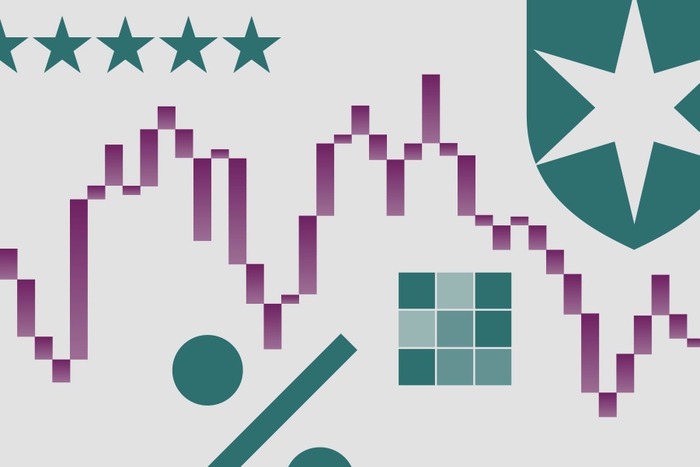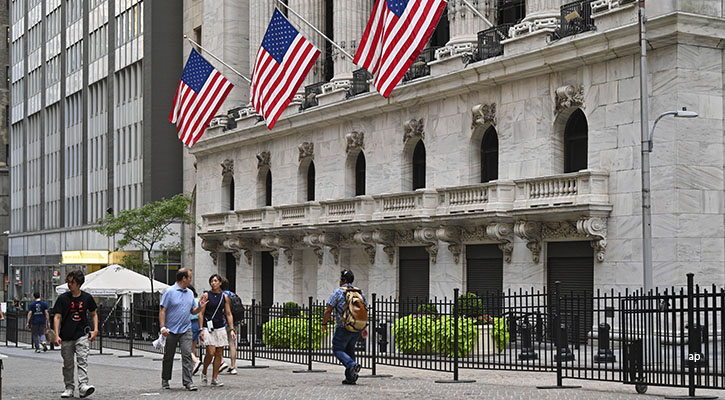In part 1 of this article, we looked at how each of the factors has and will continue to experience its own unique cycles. In part 2 of this article, we will look at how it looks like when these factors are put together.
Better Together
Value, momentum, size, quality, low volatility, and dividends are members of my factor “A-Team.” In my mind, value and momentum are the John “Hannibal” Smith and Bosco Albert “B.A.” Baracus of factors. The former is the battle-tested leader of the group, cool under pressure and known to enjoy “cigar butts.” The latter is known for being unpredictable and having a short fuse. Each member of this factor A-Team contributes its own unique and complementary talents in a team setting. The key to getting the chemistry right is sensible diversification—pairing factors that zig with teammates that zag under a given set of market conditions.
Exhibit 3 is a correlation matrix that shows the trailing 15-year correlations amongst the factor variants of the MSCI World Index that are also featured in the first two exhibits. It is apparent that some factors, measured strictly in terms of their historical correlations, are better complements than others. Value and momentum are like peanut butter and jelly. Meanwhile, value and dividend yield are like peanut butter and cashew butter.
.png)
Diversifying across complementary factors makes sense. Doing so will mitigate the aforementioned cyclicality associated with owning any one factor in isolation. This could result in lower long-term returns relative to owning the single most potent factor in isolation, but that assumes: 1) you know what that factor will be on an ex-ante basis and 2) you have the stomach to stick with it for decades. In my mind, perhaps the single most compelling reason to opt for a multifactor strategy is that it will minimize the biggest risk of all—that investors will bail on a factor, manager, or strategy when it experiences an inevitable period of relative underperformance.
What to Look For
Generally speaking, I believe that owning a multifactor ETF is preferable to trying to build a do-it-yourself multifactor model, combining single factors on one’s own, for most investors. The do-it-for-me approach is far more efficient from a cost, tax, and general portfolio management perspective.
Combining stand-alone factors in a multifactor format is a sensible strategy to the extent that the factors in consideration are 1) credible, 2) well-constructed, and 3) combined in such a way as to improve the overall risk/reward profile of the resulting portfolio relative to owning any of the factors in a stand-alone format, a traditional cap-weighted index fund, or an actively managed peer.
Most of the multifactor ETFs on offer today pass the first test above. There are few—if any—suspect factors featured in these funds, most of which select from the members of my factor A-Team. Things get trickier when assessing factor construction and the manner in which these factors are combined. My preference, as always, is to keep it simple and cheap.
As I emphasized in last month’s cover story, “Index Construction Matters,” index construction matters! It is vital that investors parse the details of the methodologies for these funds’ underlying benchmarks to understand what drives them. I have a strong preference for simplicity over complexity. The more opaque and overwrought the methodology, the more likely it is that the index is a product of back-testing alchemy and that its methodology may ultimately be revised should its live performance not live up to its back-tested track record—a record that never looks bad. And, of course, costs matter. Many of these funds, while competitively priced versus actively managed peers, have fees that are many multiples of those levied by ETFs tracking broad, cap-weighted benchmarks. Be sure you are not paying active management fees for a passively managed fund.
Last, be sure to manage your expectations. These funds are no magic elixir. Many are very new and track indexes with limited live track records. No matter how sensible their underlying indexes may seem and how low their fees, there’s no guarantee they will deliver better risk-adjusted returns than a plain old cap-weighted index fund over a full market cycle. Much like single factors or good active managers, these funds will experience their own performance cycles (albeit potentially more muted ones). Investors’ ability to reap the prospective rewards these funds might offer is positively correlated to their ability to stick with them through their inescapable ups and downs.
Key Takeaways:
1) Individual factors can work, though they typically only pay off over long horizons, often marked by extended dry spells.
2) This cyclicality can be too much for many to stomach, and they may bail before hitting their payday.
3) Combining factors that have a low degree of correlation with one another can mitigate cyclicality relative to owning them on a stand-alone basis and thus have the potential to reduce the risk of bad behavior. Spread your bets. Keep it simple. Keep it cheap.
4) Informed fund selection involves:
- Understanding how the individual factors are built.
- Understanding how they are combined.
- Calibrating your expectations regarding the fund’s risk/return profile relative to an appropriate benchmark.

















